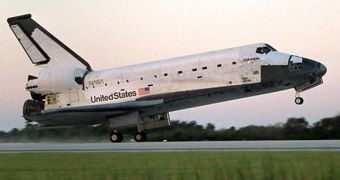Eric Knight, the co-founder of rocket company UP Aerospace and president of the Connecticut-based firm Remarkable Technologies, Inc., proposed a novel and interesting approach for reaching the Red Planet. His plan may very well seem like part of a Hollywood action script, and it involves coupling ships in orbit, sustainable gardens on board, ships spinning in tandem for gravity, and parachute landing on Mars. The really controversial part of this project is that it does not establish any way for the astronauts to get back home, thus making it a one-way mission.
"My thought paper is a mental exercise to encourage new ideas. I also hope it spurs a re-evaluation of the time line for human exploration of Mars. Twenty years seems like an eternity, given that we were able to get to the moon in less than 10 years – and we were essentially doing so 'from scratch'. I'm hoping my thought paper inspires a new wave of creative thinking in regard to travel to Mars – and beyond. That's my hope. That's my goal," he told Space in an interview, adding that the plan he set forth was not meant to be a blueprint for future missions to Mars.
The inventor also says that NASA's plan, of sending a ship to the Red Planet in about 3 to 4 decades, is unacceptable on account of the fact that the time span is too long. He also urges the American Space Agency not to retire the shuttles in museums, as the US plans on doing in 2010, but rather to give them other uses, such as additional permanent modules to the International Space Station (ISS), or carriers for lunar modules, which could be stored in their cargo bays.
Knight says that a manned mission to Mars could be achieved by virtually connecting two space shuttles together after they are in orbit. They could be united by various locking mechanisms, and an inflatable corridor could be extended between them, to ensure communications between astronauts. Then, tied together, the ships would fly in tandem for a couple of moths, while gently spinning, so as to provide some measure of artificial gravity.
Once they enter Mars' atmosphere, they are to deploy parachutes to stop their landing, because the Red Planet's atmosphere is 62 percent thinner than that of the Earth. "What I propose is the development of a very large parachute system that would be stowed in each of the orbiters' payload bays. Each orbiter would then enter the Mars atmosphere and descend ballistically (like Apollo and Soyuz capsules), deploy its parachute system, and land wheels down with surely a pretty good thump," he concludes.

 14 DAY TRIAL //
14 DAY TRIAL //